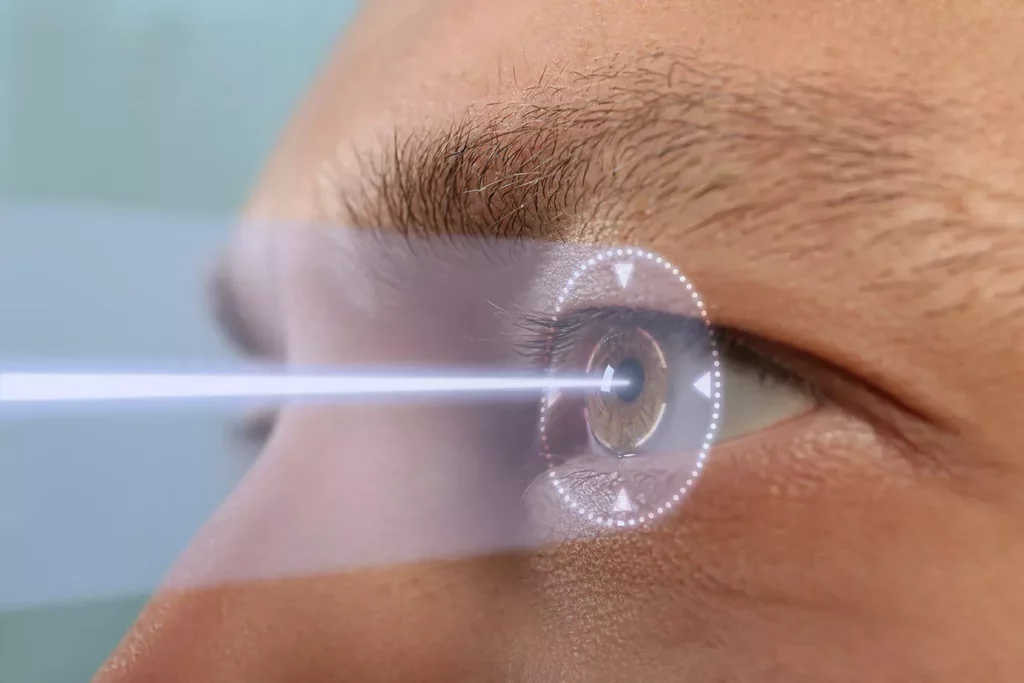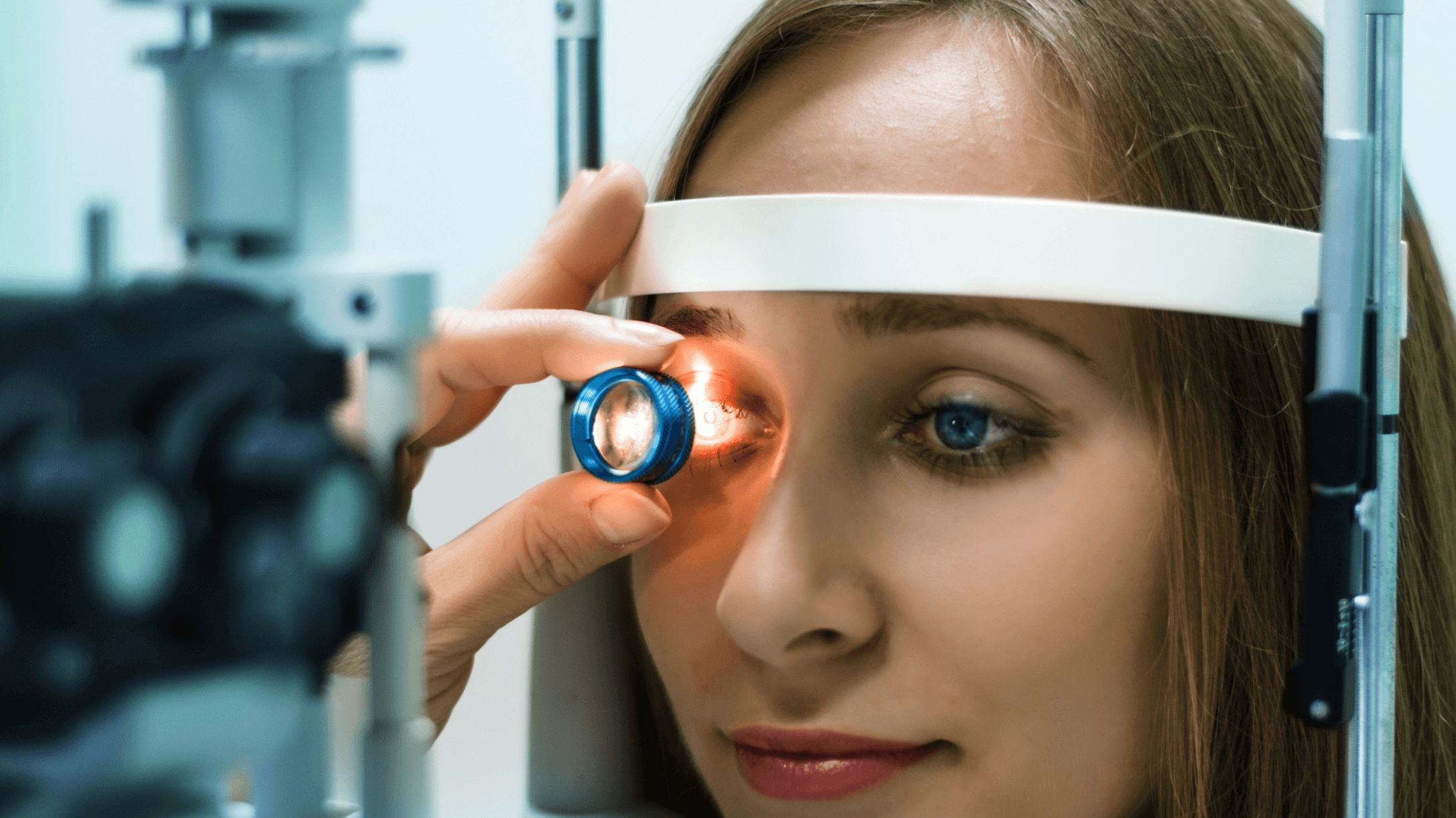Why LASIK Eye Surgery is a Popular Choice for Vision Correction

LASIK eye surgery has gained immense popularity in recent years as a trusted method of vision correction. With its high success rate and numerous benefits, it has become a preferred choice for individuals seeking improved visual acuity. In this article, we will delve into the world of LASIK, exploring its science, procedure, benefits, comparisons to other vision correction methods, potential risks and complications, and how to determine if it is the right choice for you.
Understanding LASIK Eye Surgery
The Science Behind LASIK
LASIK Eye Surgery, short for Laser-Assisted in Situ Keratomileusis, is a surgical procedure that utilizes laser technology to reshape the cornea, the clear front surface of the eye. By making precise modifications to the cornea, LASIK corrects refractive errors, such as nearsightedness, farsightedness, and astigmatism. These errors occur when the shape of the cornea does not adequately focus incoming light onto the retina, resulting in blurred vision.
The Procedure: What to Expect
The LASIK procedure is relatively quick and painless. Before the surgery begins, numbing eye drops are applied to ensure comfort throughout the process. The surgeon uses a specialized tool called a microkeratome or femtosecond laser to create a thin, hinged flap on the cornea. This flap is then carefully lifted, exposing the underlying corneal tissue.
Next, an excimer laser is used to reshape the exposed cornea according to the individual’s specific refractive error. The laser gently removes microscopic amounts of tissue, allowing for precise adjustments. Once the desired correction is achieved, the corneal flap is repositioned, acting as a natural bandage that aids in the healing process.
The entire procedure usually takes around 15 minutes per eye, and both eyes are typically treated during the same session. Most patients experience improved vision immediately or within a day, with minimal discomfort and a relatively short recovery period.
During the LASIK procedure, the surgeon carefully monitors the patient’s eye using advanced technology. Wavefront-guided LASIK, for example, uses a device called an aberrometer to create a detailed map of the eye’s unique imperfections. This map is then used to guide the laser in making precise corrections, ensuring a highly customized treatment.
After the surgery, patients are advised to take certain precautions to aid in the healing process. These may include avoiding rubbing the eyes, wearing protective eyewear, and using prescribed eye drops to prevent infection and promote proper healing. It is also important to attend follow-up appointments with the surgeon to monitor progress and address any concerns.
While LASIK is generally considered safe and effective, it is important for individuals considering the procedure to consult with a qualified eye surgeon. They will assess the patient’s eye health, discuss potential risks and benefits, and determine if LASIK is the right option for them. By understanding the science behind LASIK and what to expect during the procedure, individuals can make informed decisions about their vision correction options.

The Benefits of LASIK Eye Surgery
Immediate Improvement in Vision
One of the most significant benefits of LASIK eye surgery is the immediate improvement in vision. Many patients report a dramatic reduction in dependence on glasses or contact lenses immediately after the procedure. This newfound visual clarity allows individuals to engage in activities such as sports, swimming, or simply waking up to clear vision without the hassle of corrective eyewear.
Moreover, the immediate improvement in vision experienced after LASIK surgery can have a profound impact on an individual’s daily life. Tasks that were once challenging due to poor eyesight, such as driving at night or reading small print, become much easier and more enjoyable. The boost in confidence that comes from clear vision can also lead to increased productivity and a greater sense of independence. Read more about increased productivity at: https://greatergood.berkeley.edu/article/item/how_resting_more_can_boost_your_productivity
Long-Term Vision Stability
Another advantage of LASIK is its ability to provide long-term vision stability. Unlike conventional glasses or contact lenses, which may require frequent prescription changes, LASIK offers a more permanent solution. By reshaping the cornea, LASIK aims to correct the underlying refractive error, providing stable vision for years to come. This stability enhances the overall quality of life and eliminates the inconvenience and cost associated with regularly updating prescriptions.
Furthermore, the long-term vision stability achieved through LASIK eye surgery can open up new opportunities for individuals. Whether pursuing a career that requires excellent vision, such as a pilot or a surgeon, or simply enjoying hobbies that demand clear eyesight, such as photography or painting, LASIK can provide the visual acuity needed to excel in these endeavors. The peace of mind that comes with knowing your vision is reliable and consistent is truly invaluable.
Comparing LASIK to Other Vision Correction Methods
LASIK vs. Glasses and Contact Lenses
When comparing LASIK to traditional vision correction methods such as glasses and contact lenses, several factors come into play. While glasses and contact lenses provide immediate vision correction, they often act as temporary fixes rather than resolving the underlying issue.
LASIK, on the other hand, offers a more permanent solution by addressing the root cause of refractive errors. With LASIK, individuals can enjoy the freedom of clear vision without relying on external aids. Additionally, LASIK eliminates the inconvenience and potential discomfort of glasses or contact lenses, providing a worry-free visual experience.
Moreover, LASIK surgery has been known to enhance the quality of life for many individuals by improving their overall vision and reducing their dependence on corrective eyewear. This procedure not only offers visual clarity but also boosts self-confidence and convenience in daily activities, making it a popular choice for those seeking long-term vision improvement. Click here to learn more about boosting self-confidence.
LASIK vs. Other Surgical Procedures
Other surgical procedures, such as photorefractive keratectomy (PRK) and implantable contact lenses (ICLs), offer alternative options for vision correction. PRK is similar to LASIK but involves the removal of the entire epithelial layer of the cornea, resulting in a longer recovery period compared to LASIK.
ICLs, on the other hand, involve the permanent implantation of a contact lens-like device inside the eye. While both PRK and ICLs can be effective vision correction methods, LASIK stands out for its ability to provide immediate improvement, long-term stability, and minimal recovery time.
Furthermore, LASIK technology continues to advance, with newer techniques such as bladeless LASIK and wavefront-optimized LASIK offering enhanced precision and customization for each patient’s unique visual needs. These innovations have further solidified LASIK’s position as a leading choice for individuals looking to achieve optimal vision correction with minimal discomfort and downtime.
Potential Risks and Complications of LASIK
Short-Term Side Effects
Like any surgical procedure, LASIK carries a certain degree of risk. In the short term, some patients may experience temporary side effects such as dry eyes, halos or glare around lights, or mild discomfort. These side effects typically subside within a few weeks as the eyes heal.
It is important to note that while short-term side effects are common and usually resolve on their own, they can still be bothersome for some patients. Dry eyes, for example, may require the use of artificial tears or other lubricating eye drops to alleviate discomfort. Halos and glare can impact night vision, making driving or other nighttime activities challenging. Understanding these potential side effects and discussing them with your surgeon beforehand can help manage expectations and ensure a smoother recovery process.
Long-Term Risks
In rare cases, long-term risks may arise, albeit extremely uncommon. Issues such as under-corrections, over-corrections, or regression of the desired correction may occur, necessitating enhancements or additional procedures. However, advancements in technology and the expertise of surgeons have minimized these risks significantly, making LASIK a safe and reliable option for most candidates.
While the possibility of long-term risks exists, it is essential to consider the overall success rate of LASIK procedures. The vast majority of patients achieve improved vision and are satisfied with the results of their surgery. Regular follow-up appointments with your eye care provider can help monitor any changes in your vision and address any concerns that may arise over time. By staying informed and proactive about your eye health, you can maximize the benefits of LASIK while minimizing the potential risks associated with the procedure.

Determining if LASIK is Right for You
Ideal Candidates for LASIK
To determine if LASIK is the right choice for you, an initial consultation and pre-surgery evaluation are essential. Ideal LASIK candidates are typically adults with stable vision, free from significant eye diseases or conditions. The evaluation involves a comprehensive eye examination, including corneal measurements, visual acuity tests, and a discussion of personal expectations and goals.
Consultation and Pre-Surgery Evaluation
During the consultation, your surgeon will address any concerns, discuss the potential risks and benefits specific to your individual case, and determine if you meet the necessary criteria for LASIK candidacy. A thorough evaluation will help ensure the best possible outcome and guide you in making an informed decision regarding LASIK eye surgery.
It is important to note that while LASIK is a popular choice for vision correction, not everyone may be a suitable candidate for the procedure. Factors such as age, overall health, and certain eye conditions can impact the eligibility for LASIK. Your surgeon will consider these factors during the evaluation process to determine the most appropriate course of action for your vision needs.
Furthermore, the success of LASIK surgery is highly dependent on the skill and experience of the surgeon performing the procedure. It is crucial to choose a qualified and reputable ophthalmologist with a proven track record of successful LASIK surgeries. This ensures that you are in capable hands and increases the likelihood of achieving the desired outcome.